Pauline Boty: The Untold Story of a Pop Art Pioneer
Pauline Boty was one of the pioneers of the 1960s’ Pop Art movement in Britain, of which she was the only acknowledged female member. Her...
Nikolina Konjevod 4 April 2024
Enter the world of Marilyn Monroe, hailed as the most photographed woman globally! From glamorous portraits and cheesecake shots to publicity stills and intimate nudes, Monroe was immortalized on film and by the lenses of both professionals and eager amateurs. Each click sought to encapsulate the essence of this iconic figure.
In terms of art, she also captured the imagination of artists, but what element of Monroe were they looking for? What was it about a Hollywood goddess that gave so many people so many creative moments?
Of all pop art, perhaps the most famous are Andy Warhol’s silkscreen prints. In the months following Monroe’s death on 4th August 1962, he created over 20 screen prints, based on publicity photos from Niagara. The Marilyn Diptych (1962) is one such example/
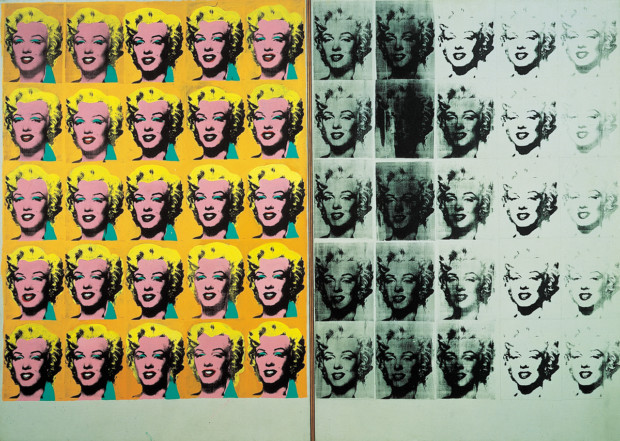
The gaudy colors of Monroe’s hair, skin, and makeup gradually fade from black and white to almost transparent. Although Warhol did not claim to be making a statement in his art, it has been suggested that this fading technique represents her mortality. However, with her image being recorded on film, our memory will never fade away and she will always remain as we remember her on screen, timeless; captured in a moment.
Another artist residing in the US was fascinated enough by the image to capture her essence on canvas while she was still alive. Dutch-born Willem de Kooning, who moved to the United States in 1927, was an artist whose style and technique brought him into Abstract Expressionism.
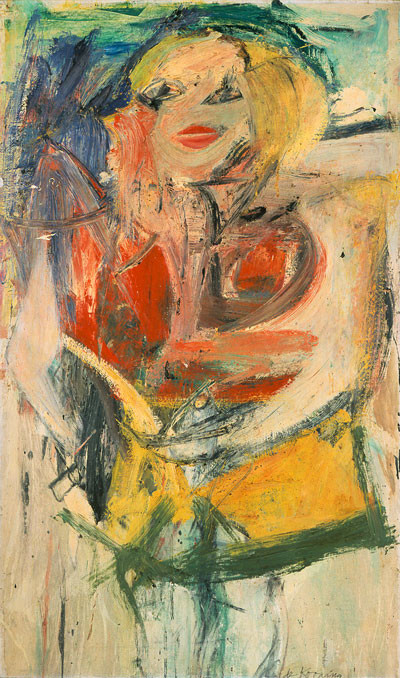
In his 1954 painting of Marilyn Monroe, the artist zeroes in on the defining elements of Monroe’s cinematic allure as seen in films like Niagara, Gentlemen Prefer Blondes, and How to Marry a Millionaire. Her iconic blonde hair, captivating blue eyes, and luscious red lips take center stage. The vivid red hue of her dress is striking, echoing the fluidity of brushstrokes that mirror her on-screen movements, be it dancing or walking.
Notably, in the film Niagara, Monroe’s departure from the camera after a dramatic event holds a unique record: the longest continuous shot of someone walking away, capturing her mesmerizing walk for an impressive 116 feet of film!
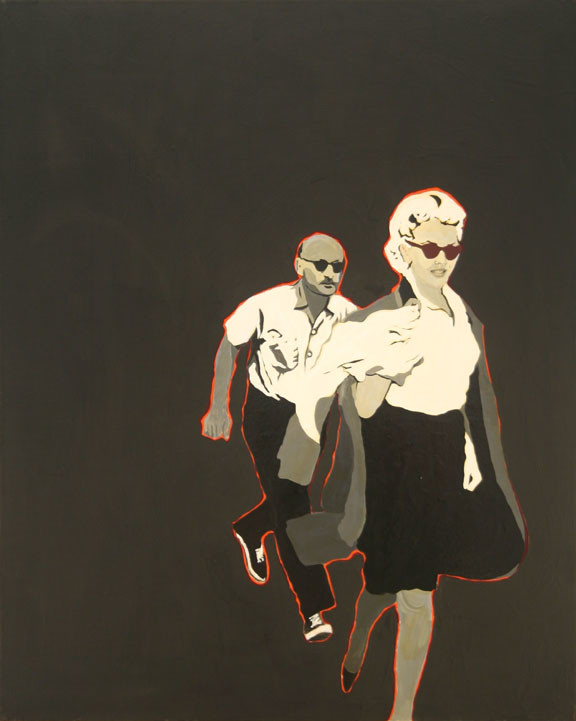
Rosalyn Drexler, a multifaceted artist with roles as a novelist, screenwriter, and former wrestler, employed the technique of collage in her art. Inspired by a magazine photograph featuring Marilyn Monroe evading paparazzi, Drexler focused on a cropped image, isolating one man seemingly chasing the anxious Monroe. While the original caption identified the man as her bodyguard, it harked back to a tragic incident where paparazzi, chasing Monroe on her wedding day to playwright Arthur Miller, caused a fatal car accident involving a journalist.
By isolating these two figures, and delineating their forms with a black palette, the titled work, Marilyn Pursued by Death, becomes poignantly fitting. Monroe’s well-documented struggles with depression and multiple suicide attempts are part of her public narrative. Despite her yearning for attention, it wasn’t always welcome, and Dexler, through her artistic lens, captures the fear that permeated Monroe’s tumultuous life.
Monroe’s fame and influence transcended American borders. In 1960s Britain, two artists found inspiration in her iconic photographic images for their art.
Pauline Boty, the sole female British Pop artist, channeled her fascination with Monroe into two paintings. Deeply affected by Monroe’s untimely death, Boty created Colour Her Gone (1962), incorporating an image from Town magazine from late 1962.
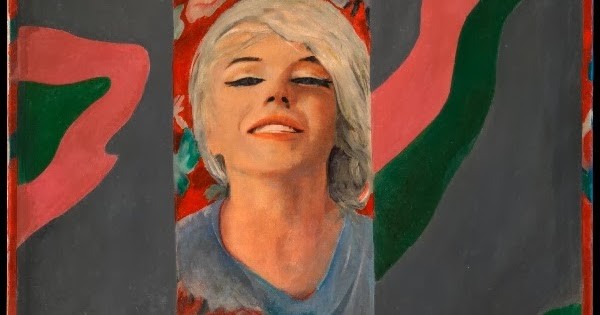
Surrounded by grey panels with swirls of color, this image captures the movement that the 1960s was bringing to culture and it asks us to consider Monroe’s role within this.
The second painting, The Only Blonde in the World, came in 1963 and used the image of Monroe from Some Like it Hot as her character, Sugar Kane, runs to her destiny with no-good saxophone player, Tony Curtis:
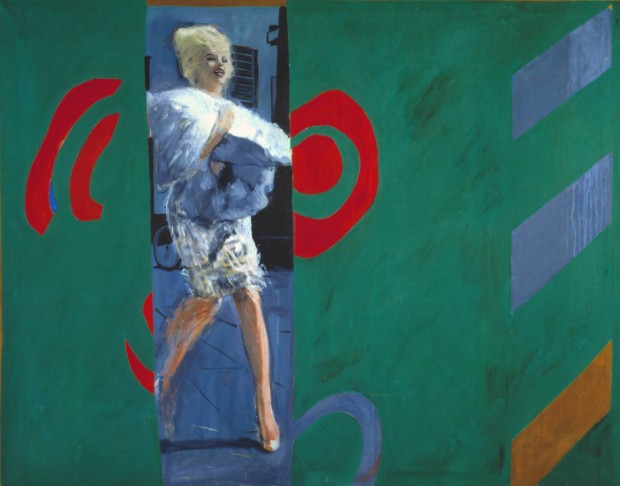
Here we have the bold, sassy Marilyn striding out in front, clasping her fur wrap around her as she heads towards the elusive love she sought all of her life. The title also shows that aspect of Monroe that was her trademark: think blonde, think Marilyn!
Legendary British artist Richard Hamilton was keen to explore a side of Marilyn not seen by her fans in his art. Despite being a screen icon and loved by millions, Marilyn suffered terrible depression and low self-esteem. When photographed, she would ask to see the proofs and would cross through the ones she did not like. Towards the end of her life, she became more violent in her defacing, using lipstick, needles, and anything sharp that came to her hand.
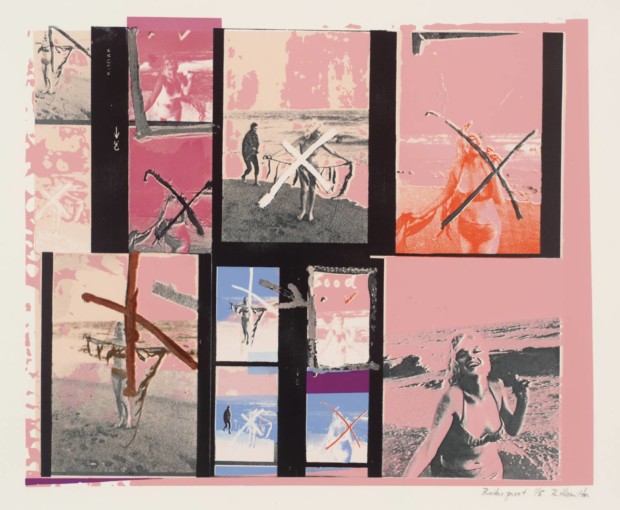
In My Marilyn (1965), Hamilton used his familiar collage technique to display photographs taken of Marilyn that she decided must never be seen. She playfully romps about on the beach in a bikini that reveals her natural body. In some ways, these damaged images make us feel that Marilyn, was in some way, trying to delete herself from the images and, perhaps, from life. Something that finally occurred in 1962.
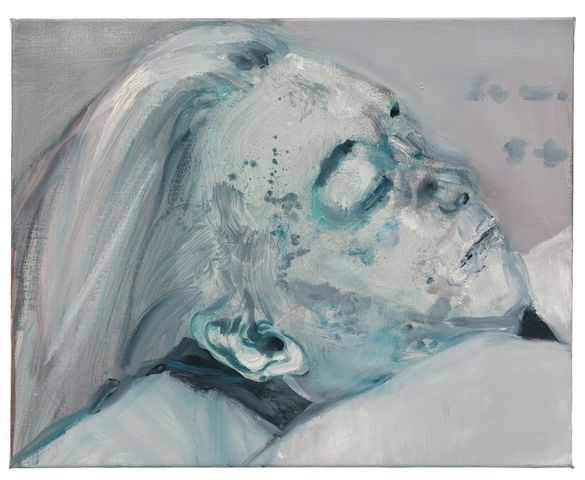
South African-born Marlene Dumas’s oeuvre is filled with paintings that seek to challenge our perceptions of identification. Her work is based around the photographic image that she adapts through her distinctive painterly style. This painting came about while looking through a box of photographs and newspaper clippings, and the autopsy image of Marilyn fell out. The most photographed woman in the world was not safe from the prying eyes of the public, even in death. Like Hamilton, Dumas uses the original image and adds to it. The blunt title, Dead Marilyn, does not pull any punches. The screen goddess is dead and there is nothing that can change this.The blue hues replace the fleshy tones we are so familiar with. The decay reveals the truth that nothing lasts forever.
45 years after her death, Marilyn Monroe continues to inspire; her image is timeless and her vulnerability is displayed to those who knew her and came to know her through her films and photographs. The fact that she inspired art at such a high level allows us to explore an unseen essence of this screen icon.

DailyArt Magazine needs your support. Every contribution, however big or small, is very valuable for our future. Thanks to it, we will be able to sustain and grow the Magazine. Thank you for your help!